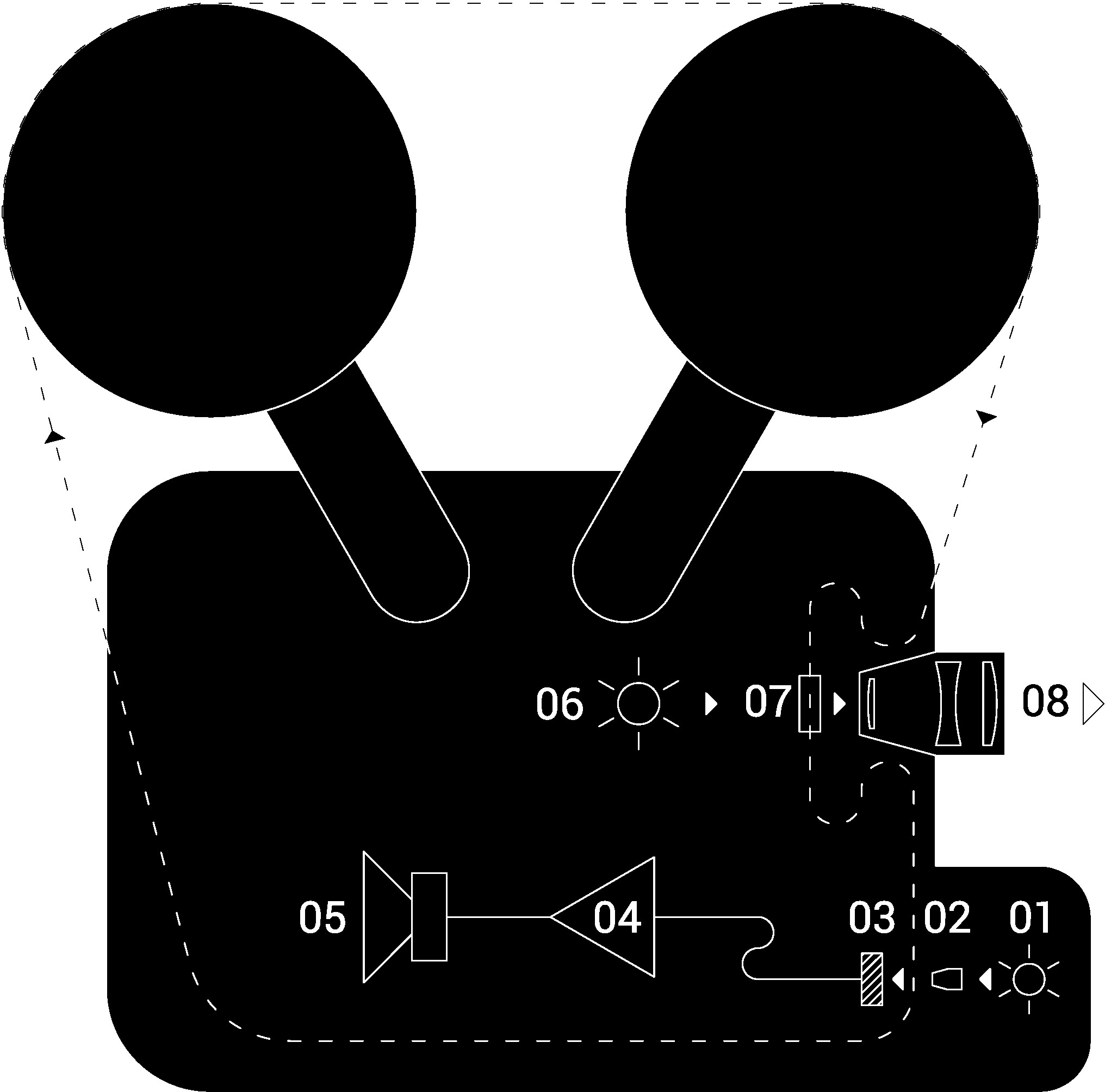EXPERIMENT IN REPRODUCTION OF SOUND
hommage to joseph t. tykociner.
OPTICAL SOUND
optical sound is a means of storing sound on transparent film. in essence, the sound vibrations are translated into corresponding oscillations of light that are photographically recorded onto film. the film projector translates the light oscillations back into audible sound.
one of the pioneers in the field of optical sound was joseph tykociński tykociner, who used a modulated mercury vapour lamp mounted on a bell & howell “proffesional” camera to make the exposure on film. the first known footage of optical sound on film was recorded in october 1921., by tykociner and his wife helena. the record was as follows: “this is an experiment in reproduction of sound. one, two, three, four, five, six, seven, eight, nine, ten.”.
link.
sound reproduction on 16mm film projector.

16mm sound film projector: 01: exciter lamp | 02: soundhead slit | 03: photo diode | 04: audio amplifier | 05: speaker | 06: projection lamp | 07: film gate | 08: lens
in a normal setup, a 16mm film projector simultaneously projects a moving picture and reproduces the sound. the sound reproduction works as follows:
light from the exciter lamp (01) passing through a narrow slit (02) in the soundhead is focused onto the film soundtrack, where a varying proportion is transmitted, depending on the density of the lines on the soundtrack.
the oscillating light is picked up by the photo diode (03) and converted into oscillations in electrical current. this current oscillations are amplified through the audio amplifier (04) and reproduced as sound waves by the speaker (05).
RECORDING THE SOUND

modified projector/recorder: 01: sound source | 02: audio amplifier | 03: led driver | 04: led | 05: soundhead slit
with a few modifications, the film projector can be turned into an optical sound recorder.
pre-recorded sound on a device such as an mp3 player or a smartphone (1) is amplified with an audio amplifier (2). instead of a speaker, an led driver (3) and white led (4) are connected to the amplifier output. in this way, the led oscillations are modulated by the sound source.
the led is placed in front of the slit (05) in the projector sound head instead of the exciter lamp.
in the darkroom, unexposed film is fed through the projector. the sound source, amplifier and led driver are turned on. as the film keeps moving in front of the oscillating light source, the oscillations are recorded onto film as a set of lines varying in density.
line density oscillations correspond to the pressure variations in the original sound wave from the sound source.

schematics for the electronic components. left: lm386 audio amplifier. right: led driver.r1: 10k timpot | r2: 5k trimpot | r3: 100ohm | c1: 1uF | c2: 10uF | c3: 10uF | c4: 100uF | s1: lm386 | s2: bc546 | d1: white led | sw: spdt switch
raw sound recorded directly through a modified bauer 16mm projector.
optical sound track reproduced with a bauer 16mm projector.
refferences:
j. t. tykociner‘s patent: US1640557.
j. t. tykociner‘s 1921. recording: youtu.be/D8jVgMaxvtg
optical sound on film: youtu.be/c6YGAaEfSj4